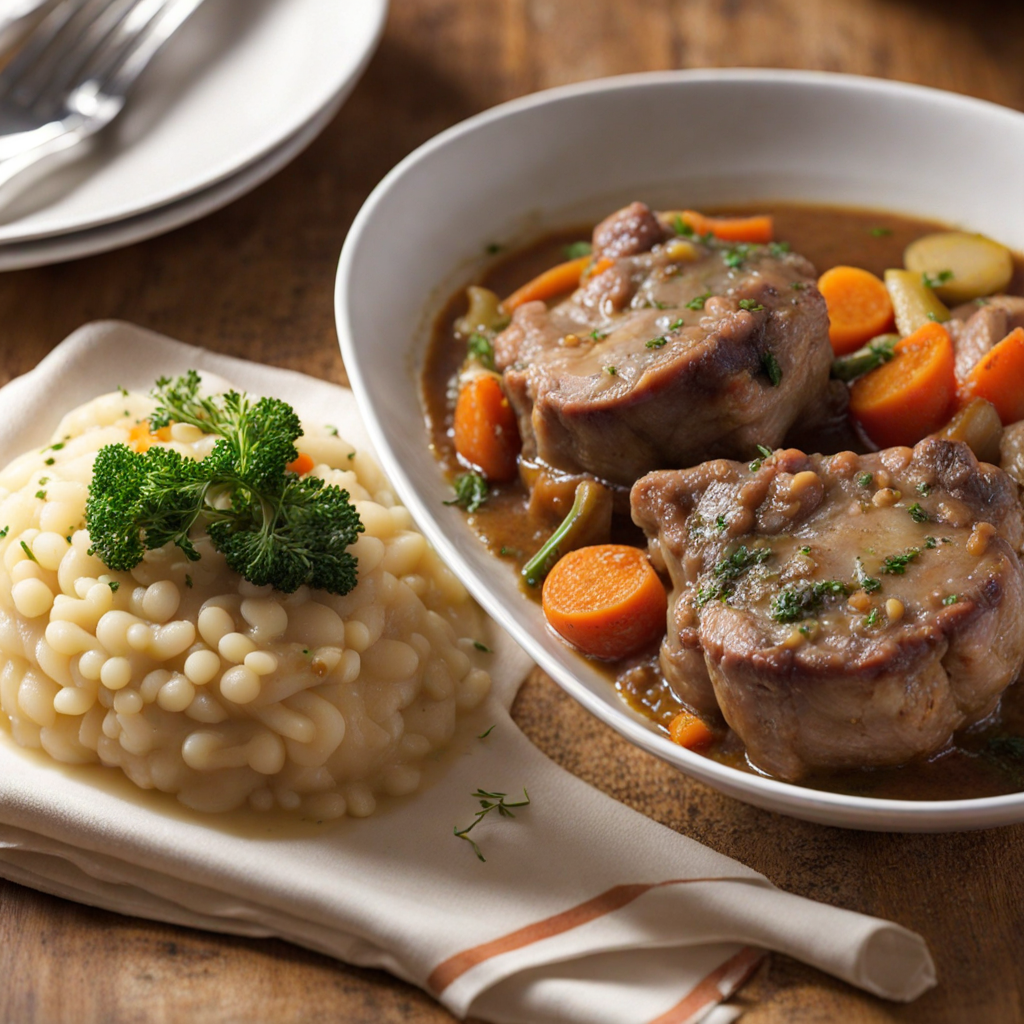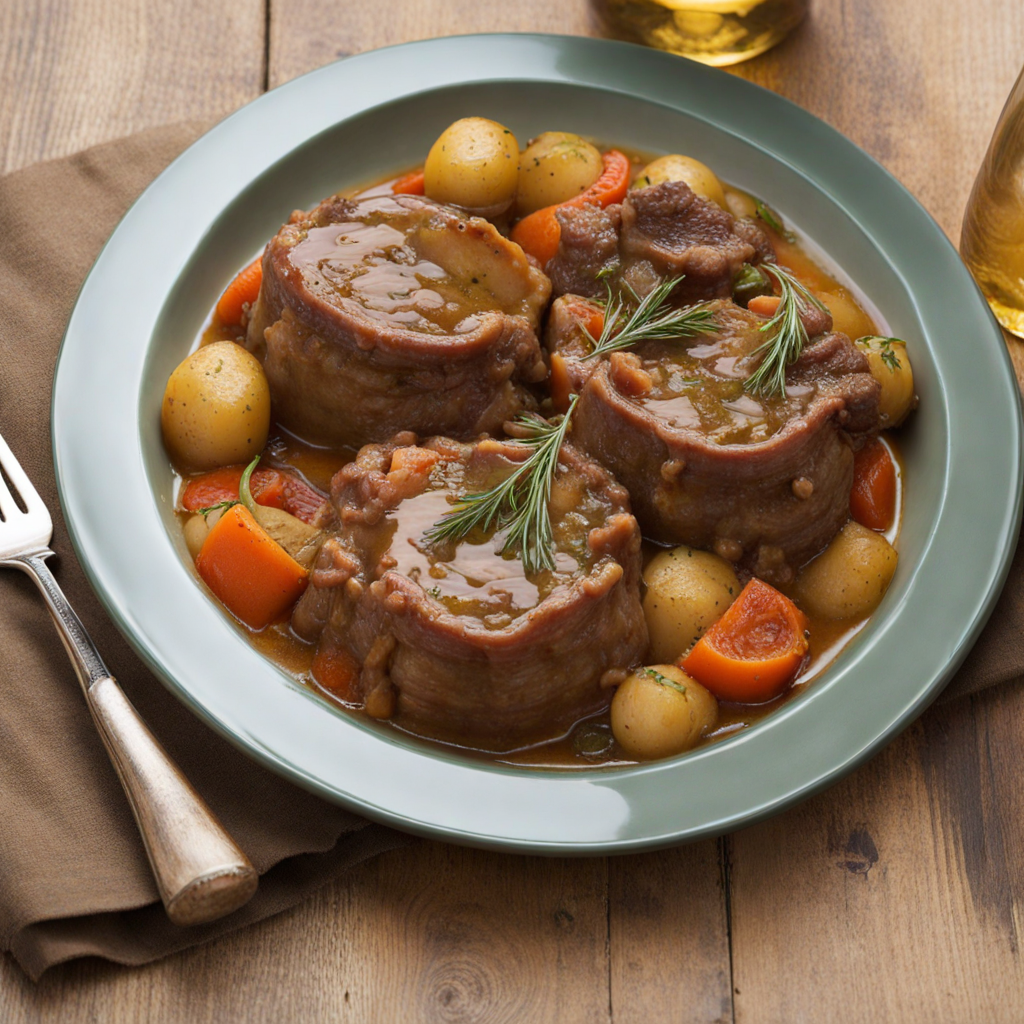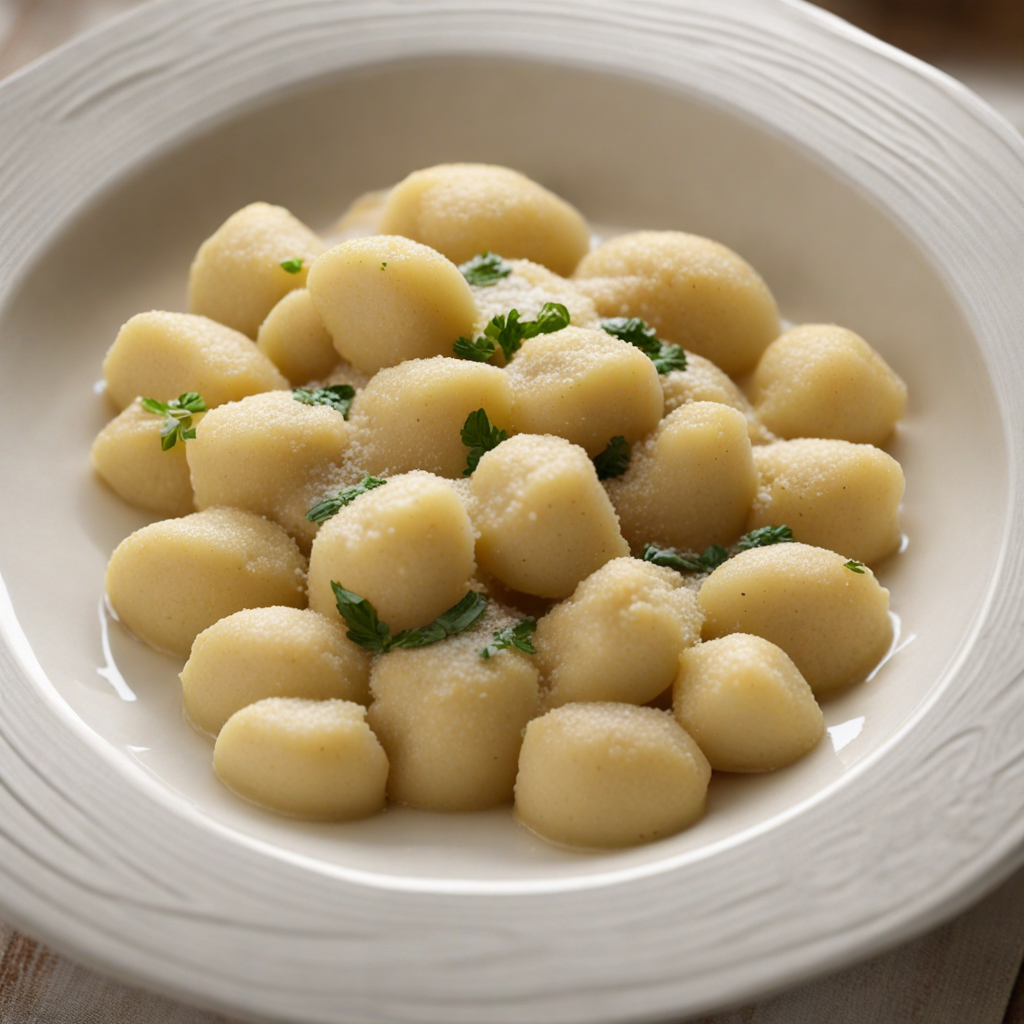Osso Buco
Osso Buco is a traditional Italian dish that hails from the northern region of Lombardy, particularly in Milan. At its core, this dish features cross-cut veal shanks that are braised to perfection. The meat is tender and succulent, and the marrow inside the bone adds a rich, buttery flavor that elevates the entire dish. Each piece is typically cooked slowly in a mixture of white wine, broth, and aromatic vegetables like carrots, celery, and onions, allowing the flavors to meld together beautifully. The result is a comforting, hearty dish that is perfect for special occasions or a cozy dinner at home. What truly sets Osso Buco apart is the addition of gremolata, a vibrant condiment made from lemon zest, garlic, and parsley. This fresh mixture is sprinkled on top just before serving, providing a zesty contrast to the rich, slow-cooked meat. The brightness of the gremolata cuts through the richness of the Osso Buco, creating a balanced and harmonious dish that excites the palate. Traditionally, it is served with a side of risotto or polenta, which not only complements the flavors but also helps soak up the delicious sauce. As you savor each bite of Osso Buco, you'll discover a complex layering of flavors and textures. The tender veal, the creamy marrow, and the fresh gremolata come together to create an unforgettable culinary experience. This dish is a celebration of Italian cooking, showcasing the importance of quality ingredients and traditional techniques. Whether enjoyed in a rustic trattoria in Italy or recreated at home, Osso Buco promises to transport you to the heart of Italian cuisine, offering a taste of warmth and familiarity that resonates with food lovers around the globe.
How It Became This Dish
Origins of Ossobuco Ossobuco, a dish that has captured the hearts and palates of many, hails from the northern Italian region of Lombardy, specifically the city of Milan. The term “ossobuco” translates to “bone with a hole,” aptly describing the thick-cut veal shanks that are the star of this culinary creation. The dish dates back to the 18th century, with its roots in traditional peasant cuisine that sought to maximize the use of available ingredients. In those times, meat was often a luxury, and the shank—a less desirable cut—was slow-cooked to tenderize it and extract the rich flavors from the marrow contained within the bone. The preparation of ossobuco typically involves braising the veal shanks with a mixture of white wine, broth, onions, carrots, and celery, creating a hearty, aromatic dish that embodies the essence of Italian comfort food. The slow cooking process allows the connective tissues to break down, resulting in tender meat that falls off the bone and a sauce that is rich and flavorful. Traditionally, ossobuco is served with gremolata, a garnish made of lemon zest, garlic, and parsley, which adds a refreshing contrast to the richness of the dish. \n\n Cultural Significance Ossobuco holds a significant place in Italian culinary tradition, particularly in Milanese cuisine. It is often served during celebrations and family gatherings, symbolizing togetherness and the importance of sharing meals with loved ones. The dish is commonly accompanied by risotto alla Milanese, a saffron-infused risotto that complements the richness of the ossobuco. This pairing highlights the regional flavors of Lombardy and showcases the Italian practice of combining ingredients to create a harmonious dining experience. Over time, ossobuco has transcended its humble origins to become a beloved dish not only in Italy but also worldwide. Its presence in Italian restaurants across the globe is a testament to its popularity and the global fascination with Italian cuisine. The dish has also inspired variations in other cultures, leading to diverse interpretations that maintain the essence of the original while incorporating local ingredients and cooking methods. \n\n Evolution of the Dish As Italian immigrants spread across the world, particularly to the United States in the late 19th and early 20th centuries, they brought with them their culinary traditions. Ossobuco became a staple in Italian-American cuisine, often served in a more robust style with tomato sauce or alongside spaghetti. This adaptation illustrates how traditional dishes can evolve when they encounter new culinary landscapes, blending ingredients and flavors to create something unique yet familiar. In contemporary gastronomy, ossobuco has experienced a renaissance, embraced by chefs who appreciate the dish's rustic roots and have elevated it to fine dining status. Innovative chefs experiment with different proteins, including pork or lamb, and incorporate modern techniques such as sous-vide cooking to enhance the texture and flavors. These adaptations reflect a broader trend in the culinary world, where chefs honor traditional recipes while infusing them with creativity and contemporary flair. \n\n Regional Variations While the classic Milanese ossobuco remains the most recognized version, various regions in Italy have developed their own interpretations of the dish. In the Veneto region, for instance, the dish may be prepared with a white wine sauce and served with polenta, highlighting the local preference for this cornmeal dish. In contrast, the southern regions might incorporate tomatoes and spices, reflecting the Mediterranean influence on their culinary practices. Furthermore, ossobuco can be made with different types of meat, including chicken or game, depending on regional availability and preferences. These variations demonstrate the adaptability of the dish and its ability to resonate with different cultural contexts while maintaining its core identity as a comforting, braised dish. \n\n Ossobuco in Modern Cuisine Today, ossobuco is celebrated not only for its rich flavors but also for its nutritional value. The marrow contained within the bone is a source of healthy fats, and the slow cooking process preserves essential nutrients from the meat and vegetables used in the dish. As the farm-to-table movement gains momentum, many chefs emphasize the importance of sourcing high-quality, sustainable ingredients, further enhancing the dish's appeal to health-conscious diners. In addition to its nutritional benefits, ossobuco is often featured in culinary competitions and food festivals, showcasing the artistry of chefs who seek to recreate this classic dish with their unique twist. The dish has also found its place in popular culture, appearing in cookbooks, television shows, and food blogs, where home cooks are inspired to try their hand at making this timeless Italian recipe. \n\n Conclusion: A Timeless Classic Ossobuco is more than just a dish; it is a reflection of Italian culture, history, and the enduring tradition of cooking with love and care. Its journey from humble origins in Lombardy to a globally recognized culinary delight illustrates the power of food to connect people across different cultures and times. As chefs continue to innovate and home cooks embrace this comforting meal, ossobuco will undoubtedly remain a cherished classic for generations to come.
You may like
Discover local flavors from Italy







